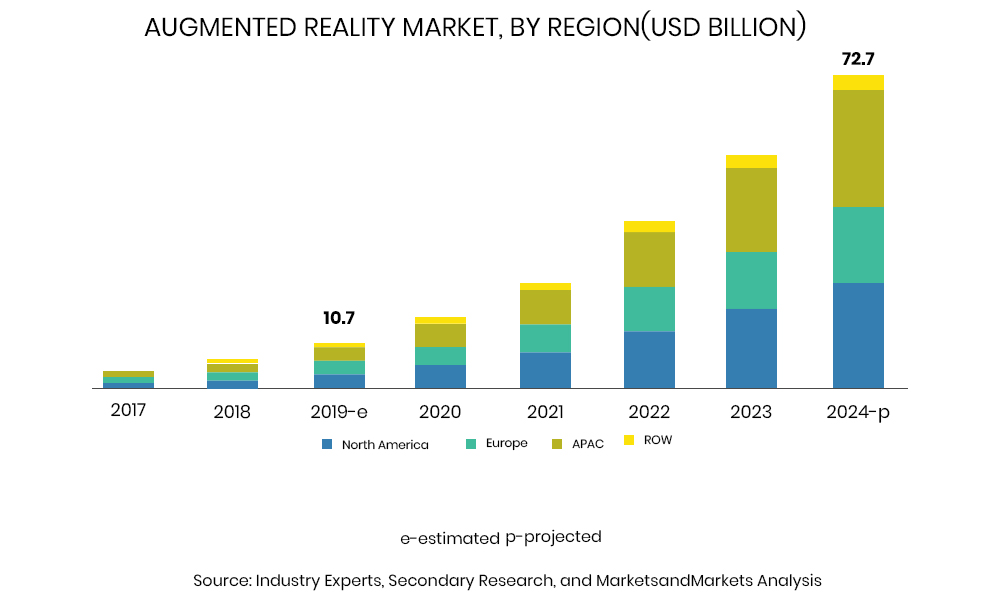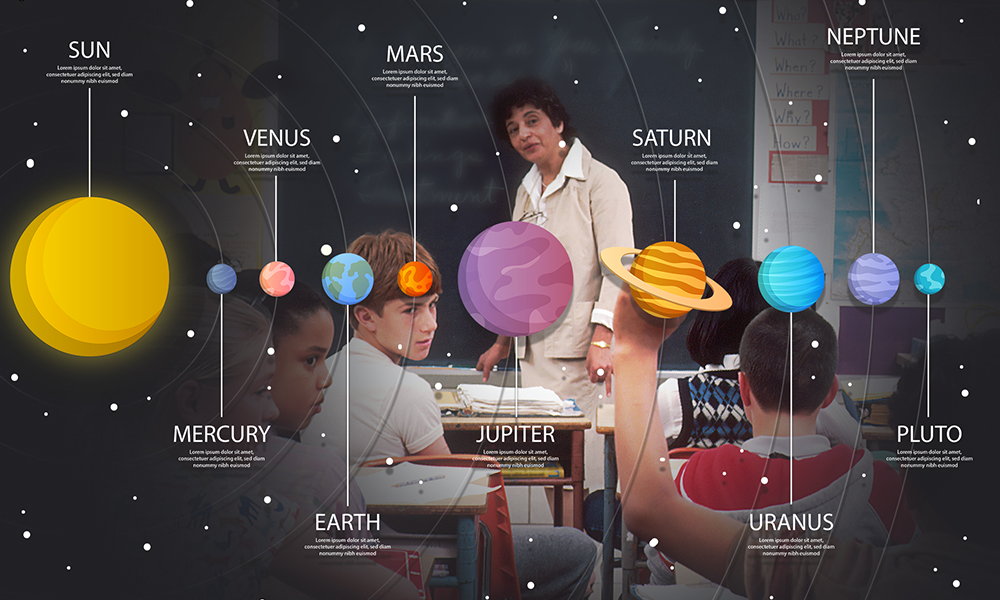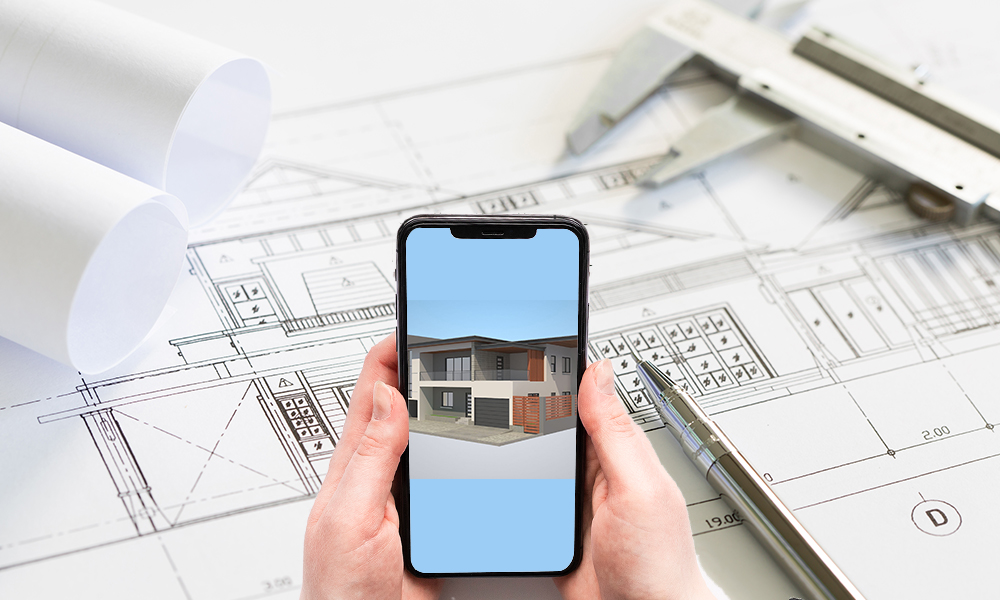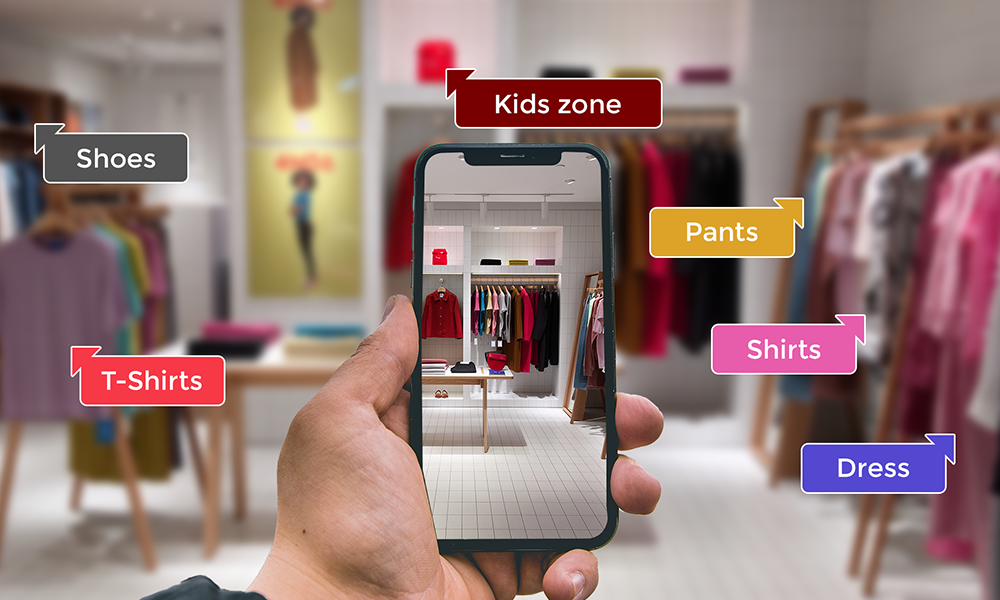Engage your Customers Better with these Futuristic AR Design Trends
Why is AR the Next Big Thing for Mobile Apps?
Fun Fact
Augmented Reality was invented in 1968. Even after 52 years, we still perceive it as the technology of the future.
Why ‘technology of the future’?

Augmented Reality holds endless potential, and it can co-exist with artificial intelligence, blockchain, and virtual reality, among other advanced technologies. Business analysts see AR as the technology that assists in building a customer-centric business.
As per a report by Markets and Markets, investment in the AR market would exceed USD 72 Bn by 2024. This data shows that investors and venture capitalists are willing to invest in the technology and anticipate high RoI out of it. Startups and entrepreneurs are looking at the latest AR design trends to attract investors.
We can clearly say that augmented reality is not a fad. It is indeed a necessity for a lucrative future.
As devices get more powerful and independent, the quality of visuals becomes better. And, augmented reality is about visual representation in the mould of reality.
Initially, it was the gaming industry that utilized the AR technology to provide a better gaming experience through the then AR design trends. Later, eCommerce industry realized its potential use to help shoppers make a better choice. Today, organizations across industries use augmented reality for the training and execution of internal processes.
To say the least, AR mobile app development remains sought after by numerous industries.
How are AR Design Trends Evolving Across Devices?
Do you know what governs this multipurpose technology?
Design, it is.
AR design trends have only evolved to prompt the potential of technology. Also, this evolution has been in proportion to the evolution of the devices. For instance, for desktop computers, augmented reality uses a webcam to display an image in the surrounding.
As opposed to this, the AR design for mobile devices is a bit tough to implement, as expectations from these devices have increased. Users expect more than just a visual representation in their reality. As a result, AR mobile app development companies are using GPS, sensors, compass, and the smart device’s camera, users can experience augmented reality in the form of an image along with a nugget of information.
As we are moving towards wearables, the AR design is evolving to offer an interactive and 360-degrees experience to users. From static design to including z-axis in the design, the AR designs have come a long way. AR design trends have ceased to break the momentum, and are moving ahead towards the future. However, it is worth understanding how we have arrived at the augmented reality design trends that we have today.
A quick tip–you should look for an experienced AR mobile app development company to get the latest solutions for your startup.
Evolution of Design – From Website to Wearable
To understand the evolution of design, let’s first consider the following:
- Imagine that you want to design a canvas and make it attractive for the onlookers. Easy, isn’t it?
- Now, you have the same quality attributes, but you need to use an A4 size paper for the design. A bit tough, but doable.
- Finally, take a visiting-card sized paper and replicate the design. Doable, but brainstorming is required.
Now look at the canvas as a website, A4 sized-paper as mobile apps, and visiting-card sized paper as wearable apps.
Thought Process Behind the Website Design
Designing a website is relatively easy, as there is a lot of space and low fear of getting elements cluttered. Designers have the leeway to turn every element visually distinct for web design. Designers can use multiple design elements and include numerous functionalities for achieving a better customer engagement rate.
Thought Process Behind the Mobile App Design
In contrast to web design, mobile app design means designers have a compact space to experiment with the UI and UX design. Information on the size of the palm meant designers have to focus on the readability while using minimalist designs. Some of the new trends that designers started following include incorporation of white spaces for developing contrast, reduction in a number of elements, and addition of a unique flow.
Thought Process Behind the Wearable App Design
The design for wearable apps is, however, different from the web and mobile app design. Wearable devices have space constraints. So, designers have to include only viable elements. As wearable apps have definite goals, it is essential to use fewer elements for users to concentrate solely on the desired functionality.
Do you want to align your business with innovative AR solutions?
As devices are getting slicker in size, intuitive design for apps becomes a brainstorming delight for designers. Besides the main purpose of the applications, designers have to understand the features that applications hold.
Currently, startups and businesses are realizing the prowess of AR, and are including AR-based features intending to drive high user engagement. Since the potential of AR is vast across functionalities and industries, the AR design trends are evolving accordingly. It is crucial for designers to know how AR is expected to interact with the audience to increase their time on the app.
AR design trends have moved far away from static designs towards motion-based designs. Flat screens no longer have the ‘awe’ quotient. In fact, audiences do not want their reality to be boxed. As a result, designers are looking for inspiration to match the needs of the audience.
If you too want some inspiration or are curious to know about the futuristic AR design trends, we have got you covered with an exclusive list.
Ready to explore the future AR design trends?
Cut the chase and know the extensive potential of AR solutions and services.
Futuristic AR Design Trends to Develop Sustainable Mobile Solutions
The modern users seek intelligence in the AR space and look for AR avatars, navigation, and whatnot.
The question is, are the software development companies prepared to cater to these demands?
The answer can be yes. The answer can be no. However, there’s one thing that can be a game-changer to stay ahead of the curve and enrich the user experience.
We are talking about the design trends of AR.
UX design plays an integral role in attributing as much reality to AR as possible. It is crucial to understand the latest AR design trends to be able to add more reality to the AR technology.
In this section, we would discuss the modern AR design trends and guidelines that add more value to the AR technology. Below is detailed information on the AR design trends.
Unboxed AR:
In the last decade, we saw how designers smartly leveraged the parameters of a mobile screen or a wearable. However, the latest AR design trends find that users wish to leap out of these boundaries and wish to explore more reality around their surroundings.
As a result, future AR design trends aren’t going to be constrained to boxed screens. Designers are thinking about a flexible interface to offer a panoramic view with augmented reality. Here the focus of the designers would be on the scenes and not the screens for offering a more immersive experience to the users.
Example of Unboxed AR Design:
A tutor is teaching his students about the solar system. The tutor and students are wearing AR headsets. As the tutor speaks, the program picks up the keywords and displays sun, planets, asteroids, and other constituents of the solar system in the classroom.

Benefits of the Design:
Imagine that you want to design canvas and make it attractive for the onlookers. Easy, isn’t it?
Upscaled Dimensions:
During the incubation period of the AR technology, the amazement to view objects in real life was a USP enough to attract users. As a result, most designs were confined within the boundaries of x-axis and y-axis. However, today 2D is just a basic AR design. The latest AR design trend is to develop a design in 3D, 4D, and 5D models.
The conventional 2D AR designs only offer a static view of objects, which is too little for the tech-savvy users. As a result, it is essential to move towards the other dimensions for a multi-faceted view of design.
Example of Upscaled Dimensions:
Upscaled dimensions can be used for viewing a static map of a city or a plan using a mobile app to have a 3D model using the AR feature.
The integration of gesture technology allows designers to create an immersive experience for users.
The added layer is in motion, which helps retain the attention of users to the screens.

Benefits of the Upscaled Dimension Design:
It provides detailed information about a floor plan or an architecture.
Spatial Design
These are the times when technology is used to offer as much human experience as possible. Look at artificial intelligence, and you will realize what we are trying to say. On similar lines, augmented reality is used to offer a seamless inside and outside transition of a design.
Spatial designs can help make the interaction with objects and information more human, intuitive, and simple. The design attracts all the senses of users in an engaging, effective, and natural way. As a result, spatial design has been taking a centerstage, and may soon become a mainstream among the other AR design trends.
Example of the Spatial Design:
A tourist uses his smartphone camera to view a monument, and information about the monument along with some interesting facts pop up that serves as a guide to the tourist.
Benefits of Spatial Design:
The design offers an engaging and human experience of things to users.
The spatial design has a clean and less cluttered experience than the conventional designs.
It helps enhance the look of visual elements that are to be overlayed.
Users can look at the colour schemes and change it as per their preferences.
A static design can be viewed in 3D, which offers better perception to users.
Dynamic 3D and Flexible in Space
Static design has become just another basic feature. As users are looking for more interactive solutions, dynamic designs are deemed viable to prompt engagement. However, implementation of a dynamic solution in open space possesses a vast scope.
On similar lines, designers are experimenting with dynamic designs within closed spaces to offer immersive experience to users. However, by closed space, we do not mean falling for a boxed design. For instance, let’s consider a huge parking lot. Despite covering a large area, there are some dimensions of this parking lot. Now, the parking area remains a closed space and designers offer a dynamic experience of motion to users to find a vacant area for parking their vehicles.
Example of Dynamic Elements Within Closed Spaces Design:
Indoor navigation solutions are one of the best examples for the dynamic within closed spaces. It can be used for shopping malls, theatres, sports grounds, etc.

Benefits of the dynamic elements within closed spaces Design:
Despite being a closed space, the design does not give the impression of being confined to a boundary to users.
Inclusion of artificial intelligence and GPS systems can create multiple applications out of this design.
Users can easily track, locate, or spot what they need to with the dynamic design.
Be the First One to Know About the Latest Technology Trends
Potential Applications of AR in Different Industries
Below are numerous industries that are vying to leverage AR to offer better experience to users:
Healthcare:
- Use of AR in the healthcare sector can help patients to remotely seek a consultation from a doctor.
- Patients, who do not agree to go to the rehab, can avail AR therapies from the very comfort of their home using AR therapy apps.
- Medical research and testing laboratories can use the AR solutions to supervise the equipment and collect samples in real time with AR laboratory monitoring apps.
Retail
- Mobile and wearable apps can allow users to view how makeup and apparels would look on oneself using the prowess of AR in the retail sector.
- Users can see how the items that they are viewing on the eCommerce portals will look in reality.
- In the physical retail stores, users can use the indoor navigation system to find the location of items that they wish to buy.
Manufacturing:
- Augmented reality apps can reduce the time for conducting training sessions through software that can allow new employees to understand the process.
- Companies officials can integrate smart augmented reality tools to reduce the number of errors and monitor the manufacturing process in real time.
- AR-based software can help identify the actual problem and resources can easily locate the problem for quickly resolving it.
Education:
- Tutors can easily teach tough concepts about various subjects using augmented reality.
- An AR can help offer personalised learning experience to students using online modules. This way, students can learn about the concepts at their own pace.
- Educational institutes can encourage practical learning and can put an end to rote learning environment.
Logistics & Transportation:
- An AR app can overlay information on the glasses of vans and vehicles, thereby offering better routes to drivers.
- Software for augmented reality can provide remote assistance to the provider by allowing the experts to see what the warehouse resource is looking at to boost efficiency.
- Better warehouse management can be done and resources can find out the locations of items easily.
Travel & Tourism:
- Users can get complete information and learn about interesting facts related to a place using the AR camera. As a result, they do not have to invest in a guide.
- An AR app can offer interactive and user-friendly ways for outdoor navigation.
- Hotel owners can leverage the AR feature to offer a virtual tour of their rooms and services to the potential travellers.
Turn your Vision into your Business Solution
Key Takeaway
After going through the guide, you may already have a number of questions regarding AR app development services.
For example,
Where to find an experienced AR app development service provider?
What is the AR app development cost?
How to build an augmented reality app?
Nonetheless, whether you are developing an AR mobile app or an AR wearable App, knowing the real intent behind the development is crucial. AR is a relatively new concept with mobile apps, and it requires high expertise to present the real application of AR in a way that can engage customers in a better manner.
AR design trends are evolving, and will continue to do so. The current trends may go redundant in a while, and you would again have to look for innovation in the solution. So, if you are thinking about AR solutions, you have to think about the future AR design to survive for a long term.
While it’s easy to seek inspiration from other designs, look for a tech partner that innovates for the others to follow. This way, you can ensure that your AR solution is relevant in the market for a long term.


